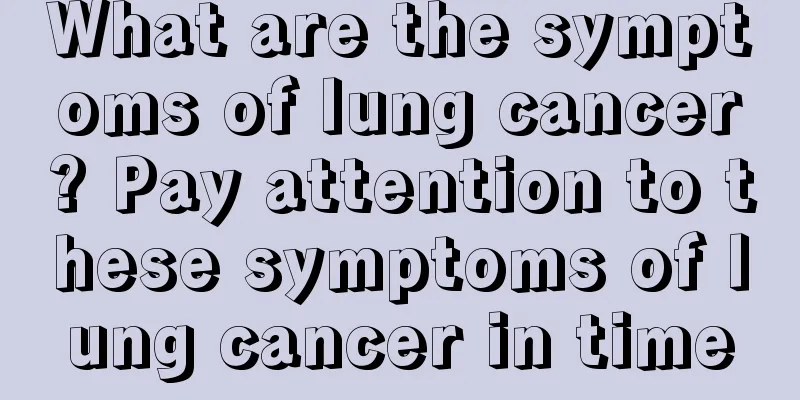Manifestations and symptoms of hepatitis

|
I believe everyone should be very familiar with hepatitis in our daily lives. Because the incidence of hepatitis is very high now, and it is developing in younger people, so we need to pay special attention to our bodies. Let us learn about the symptoms of hepatitis below. Main symptoms: (1) Acute hepatitis: ① Acute icteric hepatitis: The onset is relatively rapid, with symptoms such as chills, fever, fatigue, anorexia, aversion to oil, nausea, and vomiting. After about 1 week, the urine becomes dark yellow, followed by jaundice on the sclera and skin. The liver and spleen may both be enlarged, and carbuncle is obvious when percussion is applied in the liver area. After about 2-3 weeks, the jaundice gradually subsides, the spirit and appetite improve, and the hepatomegaly gradually subsides. The course of the disease is about 1-2 months. ② Acute non-icteric hepatitis: The onset is slow, and the symptoms are generally mild. Most patients do not have fever, and jaundice does not appear throughout the entire course of the disease. Other symptoms and signs are similar to those of acute icteric hepatitis, but the incidence rate is high, accounting for about 70%-90% of the total number of acute hepatitis patients. (2) Chronic hepatitis: ① Chronic persistent hepatitis: It is caused by the persistence of acute hepatitis. The course of the disease lasts for more than half a year without obvious improvement. There is still loss of appetite, flank pain, fatigue, hepatomegaly, pain in the liver area, etc. ② Chronic active hepatitis: The course of the disease is more than 1 year, and there are obvious abnormalities in symptoms, signs and liver function tests. The main symptoms are fatigue, poor appetite, abdominal distension, pain in the liver area, etc., and there are signs such as liver disease face, liver palms, spider nevi, jaundice, hard liver, and splenomegaly. After treatment, some patients can recover or stabilize, while others continue to deteriorate and develop into necrotic cirrhosis. (3) Severe hepatitis: ① Acute severe disease: sudden onset of high fever, with severe symptoms. Jaundice quickly deepens after it appears. The liver shrinks with obvious liver odor and significantly reduced liver function. There is often bleeding or bleeding tendency, ascites, lower limb edema, proteinuria, tubular urine, etc. Mental symptoms such as irritability, delirium, mania, etc. may also occur, followed by hepatic coma. If rescue is not timely, it may lead to death. ② Subacute severe disease: The initial stage of the disease is similar to hepatitis. After 2-3 weeks, the condition does not improve but gradually worsens. There are often fatigue, anorexia, severe abdominal distension, oliguria, severe jaundice, obvious bleeding tendency and ascites. In the late stage, central nervous system symptoms may appear, and coma may also occur. Most patients die 2-12 weeks after the onset of the disease. Some patients may develop post-necrotic cirrhosis. The above article gives you a detailed introduction to the symptoms of hepatitis. I believe you already have a more detailed understanding. So in your daily life, if you encounter such a situation, you should go to the hospital immediately for a detailed examination. |
<<: What are the disadvantages of eating peanuts
>>: Treatment of isolated hematuria
Recommend
How to use rosin
Many people are unfamiliar with rosin. It is main...
What are the consequences of not treating mold
Because of lifestyle habits and other reasons, ma...
What is the use of mosquito coil ash
There are many mosquitoes in the summer, and most...
How to take care of liver cancer? There are 5 daily care methods for liver cancer
1. Maintaining a good mental state is the key to ...
You need to know the early symptoms of tongue cancer
Tongue cancer is the most common oral cancer, mor...
How to preserve crabs if you can't finish them
Many people like to eat crabs and buy a lot of cr...
What is the cause of stiff back
A stiff back will have a certain impact on our li...
What to do if chicken lays soft preserved eggs
Soft-shelled eggs are often found in chicken farm...
What are the imported liver cancer drugs
Liver cancer is a malignant tumor of the liver. I...
Oral mucosal ringworm
Many people are more likely to get some oral dise...
Six major clinical manifestations of liver cancer
Liver cancer is a malignant tumor with a mortalit...
Do you know the symptoms of colon cancer!
Intestinal cancer is usually asymptomatic in the ...
Lower abdominal pain when urinating
A normal bladder has a certain capacity. When it ...
How long can patients with advanced lung cancer generally live?
Lung cancer is one of the malignant tumors with t...
Prevention of bladder cancer should start from daily life
Bladder cancer is a type of tumor with a relative...









